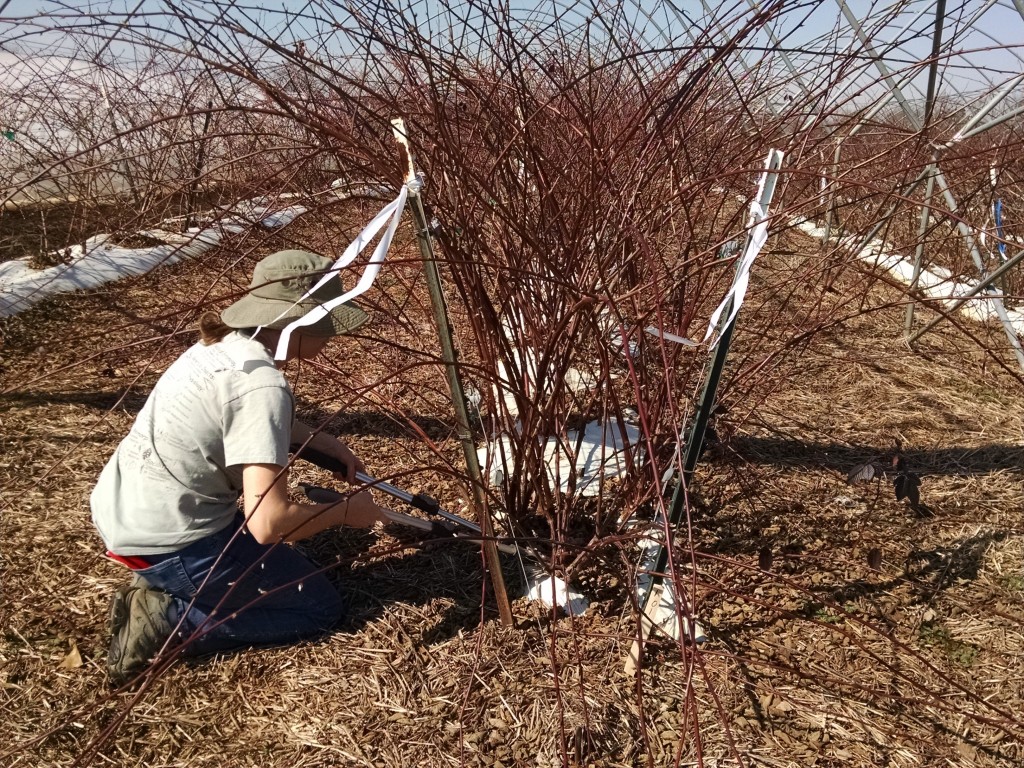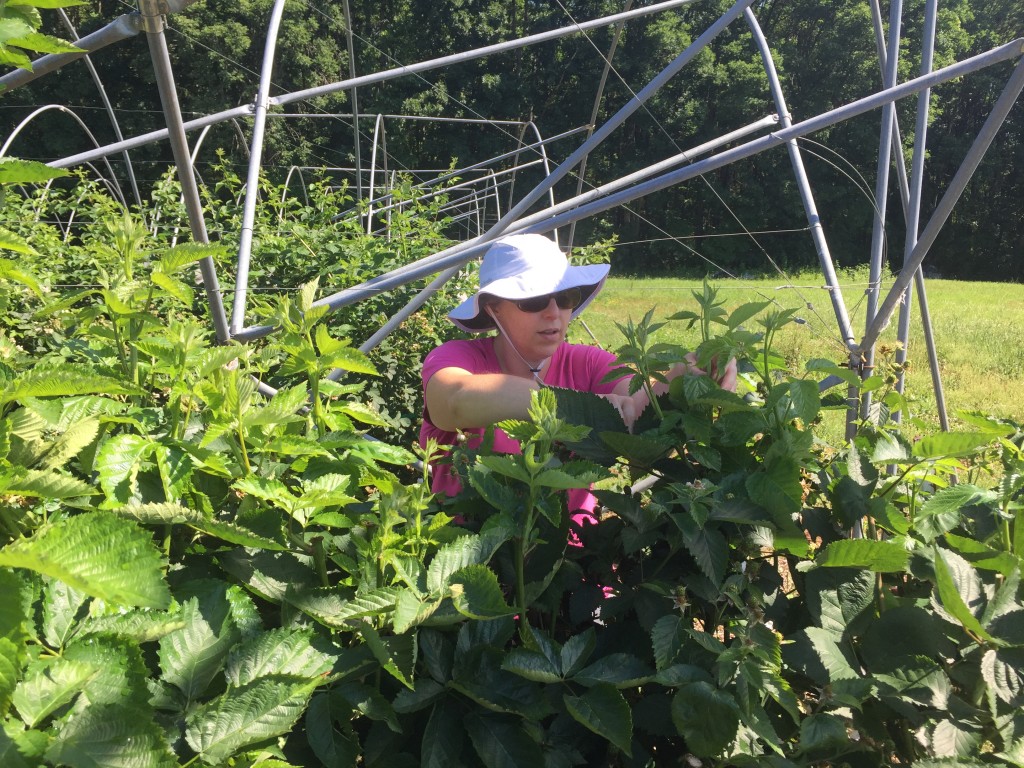Variation in Spotted Wing Drosophila Infestation Throughout Blackberry Canes
go.ncsu.edu/readext?416292
en Español / em Português
El inglés es el idioma de control de esta página. En la medida en que haya algún conflicto entre la traducción al inglés y la traducción, el inglés prevalece.
Al hacer clic en el enlace de traducción se activa un servicio de traducción gratuito para convertir la página al español. Al igual que con cualquier traducción por Internet, la conversión no es sensible al contexto y puede que no traduzca el texto en su significado original. NC State Extension no garantiza la exactitud del texto traducido. Por favor, tenga en cuenta que algunas aplicaciones y/o servicios pueden no funcionar como se espera cuando se traducen.
Português
Inglês é o idioma de controle desta página. Na medida que haja algum conflito entre o texto original em Inglês e a tradução, o Inglês prevalece.
Ao clicar no link de tradução, um serviço gratuito de tradução será ativado para converter a página para o Português. Como em qualquer tradução pela internet, a conversão não é sensivel ao contexto e pode não ocorrer a tradução para o significado orginal. O serviço de Extensão da Carolina do Norte (NC State Extension) não garante a exatidão do texto traduzido. Por favor, observe que algumas funções ou serviços podem não funcionar como esperado após a tradução.
English
English is the controlling language of this page. To the extent there is any conflict between the English text and the translation, English controls.
Clicking on the translation link activates a free translation service to convert the page to Spanish. As with any Internet translation, the conversion is not context-sensitive and may not translate the text to its original meaning. NC State Extension does not guarantee the accuracy of the translated text. Please note that some applications and/or services may not function as expected when translated.
Collapse ▲SWD infestation varies throughout blackberry canes
A recently study from our lab explored how spotted wing drosophila (SWD) use the microhabitat within blackberry canes, which can be problematic for the management of this pest. This research was based on field observations of adult SWD lingering in the interior portions of an under-pruned commercial blackberry planting. SWD are generally not active during the daylight hours, preferring the dawn and dusk periods for the majority of their activity (Ferguson et al. 2015), so this was an unexpected observation.
Based on this observation, we sampled ripe, marketable berries from throughout the cane canopy (Fig 1; samples taken in “canopy”, “inner”, “mid-edge”, and “lower edge”) of 4 commercial blackberry plantings (2 in 2014, 2 in 2015) and at 2 research stations (Piedmont and Sandhills).
In 3 out of 4 commercial plantings and at both research stations, we found that infestation was highest within the inner portion of the canes. We also found that once infestation occurred in this inner area, it was persistent in the field for the remainder of the season. Overall rates of infestation were lower at our fourth commercial location (2015). This grower was aware of our preliminary research from 2014 and ensured that plantings were highly pruned to enable air flow and light penetration (potentially reducing areas of higher humidity within the canes) and increase spray penetration for insecticide application. Researchers were also invited to talk with the pickers about SWD and how they can help by removing all fruit when picking, even the unmarketable fruit.
Because we expected that this difference in infestation might be due to a difference in abiotic conditions (temperature and relative humidity), we did a preliminary exploration of these factors using weather stations at one grower field in 2014 and at one field station in 2015. Our data show that while there was no difference in temperature between the interior portion of the cane and the edge of the growing field, there was a difference in relative humidity, with the interior portions of the canes being more humid than the edge of the field. SWD has been shown to have a greater rate of survival and higher reproductive capacity with higher levels of humidity (Tochen et al. 2015), so a higher relative humidity within blackberry canes may create an ideal habitat for SWD.
Can blackberry canes be managed for better SWD control?
Evaluation of cultural management practices for spotted wing drosophila (SWD) control is one of the goals of a recently funded USDA Organic Research and Extension Initiative (OREI; http://eorganic.info/spottedwingorganic). This grant is headed by Dr. Ash Sial (U. of Georgia), with collaborating researchers across the United States.
As part of this research team, we are evaluating blackberry cane density management at our Piedmont Research Station. During the winter floricane pruning, we created treatments with 3 different densities of canes and trimmed back vertical growth to approximately 4 feet (approx. 1.2 m). Primocanes have been permitted to grow in naturally during the spring and summer and are tipped periodically to maintain the height of vegetation.
We will begin our blackberry harvest this coming week, picking ‘Ouachita’ now and also ‘Von’ in a few weeks. During the harvest, we will be looking at infestation, yield, and berry quality within each pruning regime. While our goal is to reduce infestation using pruning practices, we also have to be sure that we do not negatively impact yield or berry quality to ensure that these are viable management options for growers.
To follow our research through the season, follow @NCSmallFruitIPM on Twitter or NC State University Small Fruit on Facebook.
References:
Diepenbrock, L.M. and H.J. Burrack. 2016. Variation of within-crop microhabitat use by Drosophila suzukii (Diptera: Drosophilidae) in blackberry. Journal of Applied Entomology. DOI 10.1111/jen.12335 http://onlinelibrary.wiley.com/doi/10.1111/jen.12335/abstract
Ferguson, C.T.J., O’Neill, C.L., Audsley, N., and R.E. Isaac. 2015. The sexually dimorphic behaviour of adult Drosophila suzukii: elevated female locomotor activity and loss of siesta is a post-mating response. Journal of Experimental Biology 218: 3855-3861.DOI 10.1242/jeb.125468 http://jeb.biologists.org/content/218/23/3855
Tochen, S., Woltz, J.M., Dalton, D.T., Lee, J.C., Wiman, N.J., and V. M. Walton. 2015. Humidity affects populations of Drosophila suzukii (Diptera: Drosophilidae) in blueberry. Journal of Applied Entomology 140: 47-57. DOI 10.1111/jen.12247 http://onlinelibrary.wiley.com/doi/10.1111/jen.12247/full
Organic Management of Spotted Wing Drosophila (USDA OREI): http://eorganic.info/spottedwingorganic





